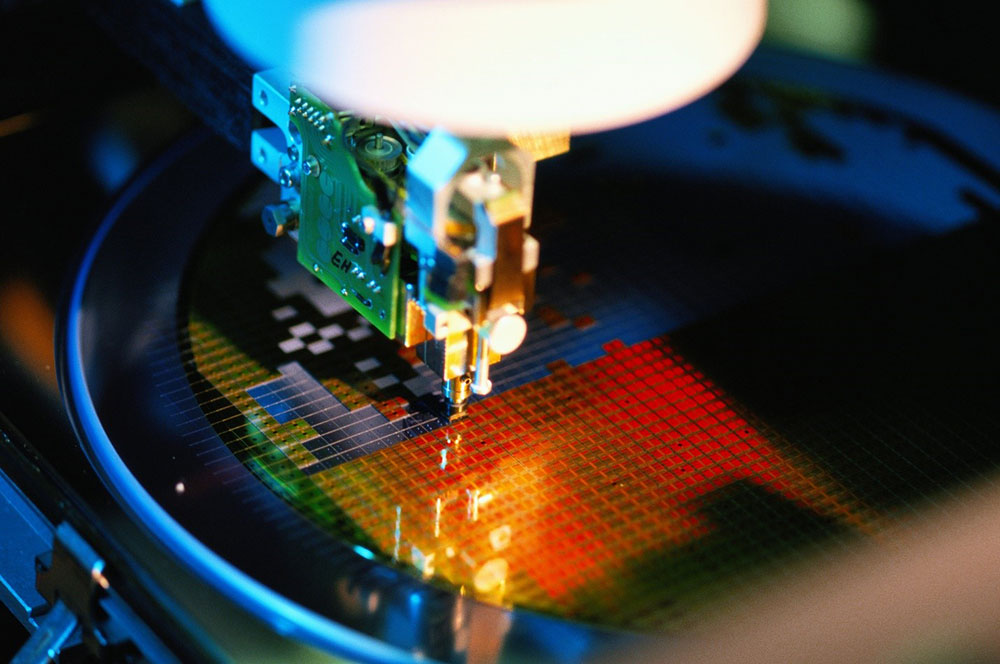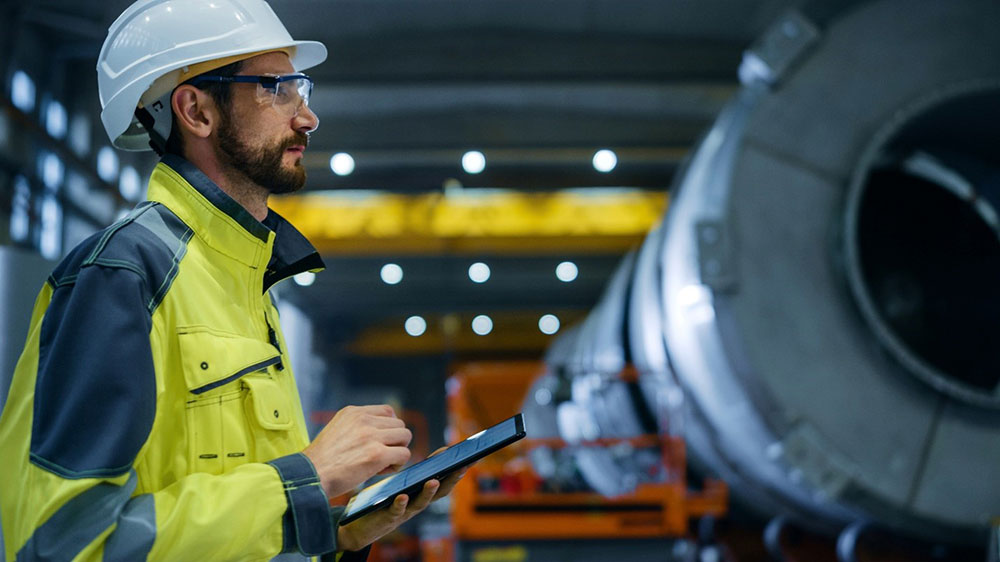Digital twins and the metaverse are converging: welcome to the metafactory
Fujitsu / July 14, 2022
Modeling and stress-testing factories and supply chains can drive much higher levels of resilience. Digital twins are taking us towards this goal, argues Esa Aho, Head of Portfolio at Fujitsu Finland, but we haven’t yet put human beings fully into the model. That’s about to change.
Modelling how humans really interact with factory equipment
As digitalization progresses, technologies that seemed to be entirely separate are converging to create exciting new possibilities. Broadcasting, which goes back to the early 20th century, is now in the final stages of convergence with the internet, for example, bringing us the world of on-demand news and entertainment.
We are about to see something similar happen with digital twins and the metaverse.
That will bring significant changes in manufacturing because it will properly account for how humans interact with factory equipment. Digital twins, already established in the sector, are digital models of an object or system, but where a human isn’t a dynamic part of the model. On the other hand, the metaverse allows humans to interact dynamically in environments made up of digital images — furniture, cars, pictures of products, for example — but without the ability to change the state of those objects.

Metaverse allows humans to interact dynamically in environments made up of digital images
Getting inside the digital twin
Digital twins are much more than CAD images. They contain and respond to data inputs, moving from one state to another in the process. In a manufacturing context, this could be a twin of a machine or production line where I enter data to simulate what happens under different loadings.
In the case of a metaverse environment, I could see the physical layout of the equipment in its factory location — taken from a CAD drawing in all likelihood — and walk around it. But I wouldn’t be able to “operate” anything because I am just looking at CAD images and cannot access or update the data.
Put a digital twin inside a metaverse and what we now have is a “metafactory”, where people can experience and work with the machines and systems that comprise the factory. A metafactory would make digital twins more alive because people are a massively important aspect of any system. Put another way — it’s not a twin if there’s no human in it.
What’s coming is the convergence of these two technologies such that humans can operate machinery, make consequence-free errors while experimenting with new settings, and learn from any aspect of a digital twin environment. The opportunities are enormous and will change how we design, manufacture, sell, train, and deliver goods across supply chains.

Digital twins contain and respond to data inputs, moving from one state to another in the process
The evolution of the digital twin
Digital twins are currently being used in manufacturing for monitoring, diagnostics, and prognostics to optimize asset performance and utilization, to predict equipment failures, or supply chain inventory. Production lines can be adjusted in real time to respond to changes in demand.
Initially, the technology was applied to single machines but is becoming more complex and valuable all the time. Increasingly, Fujitsu is working on connecting separate digital twins of multiple machines, whole production lines, complete factories, or even chains of factories.
Over the next ten years, multiple digital twins developed separately in areas such as urban mobility, energy, environment, disaster prevention and healthcare, will be connected, with underlying data mutually linked. We will then have federated systems where we can rehearse complex scenarios in a digital space, for example, how urban transport and energy supplies will be affected in the event of a large-scale disaster. This enables us to prepare a response to systemic risks, and to generate prompt and appropriate actions. Digital twin technology will also help us simulate climate change impacts and respond to future pandemics.
The theoretical work to accommodate societal factors is taking place too. In February, Fujitsu announced collaborative research projects with Carnegie Mellon University focused on social digital twin technology to reproduce the relationships and connections between people, goods, the economy, and society. The idea is to offer a simulation, prediction, and decision-making environment to solve diverse and complex social issues.
There are few limits to what is theoretically possible here. The European Space Agency’s Destination Earth project aims to develop an accurate digital model of the Earth to monitor and predict the interaction between natural phenomena and human activities.

Digital twins are used in manufacturing for monitoring, diagnostics, and prognostics
Inside the metafactory
We get some fascinating possibilities by converging digital twins with the metaverse to create metafactories.
Remote working is already happening in factories in a variety of ways. Cutting unproductive travel time helps factory owners and managers overcome severe shortages of qualified and experienced maintenance engineers and support workers. The metafactory would complete the concept by enabling engineers located anywhere to “enter” the twin and interact with settings and data to see what happens in real time.
It would open up new employment options for people with physical disabilities and the elderly who may have difficulty going out. Anyone can realize their potential in a virtual space, for example, by using remote robotics to see the physical world or by using technology to pursue advanced education.
Metafactories will also immerse people in training that will be as near the real thing as possible. The experience would be as realistic as the high-end flight simulators used for pilot training.
We would also better understand how people misunderstand equipment controls, instrumentation, documentation and training on current equipment. As well as training people to be less likely to make mistakes in the first place, the metafactory would provide a feedback loop to iron out the design and training issues that caused those errors.
In the process industries, for example, this will be a game-changer. These industries are already highly automated, but the remaining weak link is the person controlling the system, where human error can occur.
And in all areas of manufacturing, metafactories will enable us to study the consequences of potentially catastrophic user errors, for example, when a stressed worker pushes the wrong button by mistake.
I can see other changes coming too. In gaming, people can mod their favorite environments with SDKs made available to user communities by the game owner. With appropriate permissions and security, I could envisage individuals, university departments and startups working on open-source metafactory communities to identify possible improvements to a setup or addons for greater efficiency or functionality.
Pursue that thought and you arrive at something like a metafactory app store: A market where developers offer plugins that adapt and enhance performance.
There are clear security challenges here, where distributed trust technologies will be essential to make progress. Fujitsu has been providing identity- and privacy-related technologies, including decentralized ID, multi-biometric authentication, and privacy protection. In addition, we are focused on developing data trust technologies that ensure the authenticity of data to facilitate data exchange. We also strengthen the security of the network and AI systems that underpin our social infrastructure, while developing trust technology that ensures access to people, systems, and devices across physical and digital spaces.

Metafactories: Converging digital twins with the metaverse
No insurmountable barriers
There’s nothing here that we don’t already know how to do — which means it will happen.
One practical issue is the real-time data aggregation and throughput needed for a metafactory. It would strain current computing, networking, and data filtering fabrics, for example. A current-generation digital twin of just a single machine can have tens of thousands of data points coming in from IoT sensors every second. That can quickly mount up into terabytes and moving that volume through a network is currently challenging for caches, storage, and gateways. 6G and optical networks will probably be part of the picture.
But if convergence is one reliable technology trend, so is the regular uprating of technical footprints, so that today’s constraints become tomorrow’s conventions.
To find out more about what digital twins can deliver today and how to future-proof your investment for tomorrow, visit Smart Manufacturing AI Solutions.

One practical issue is the real-time data aggregation and throughput needed for a metafactory

Editor's Picks






